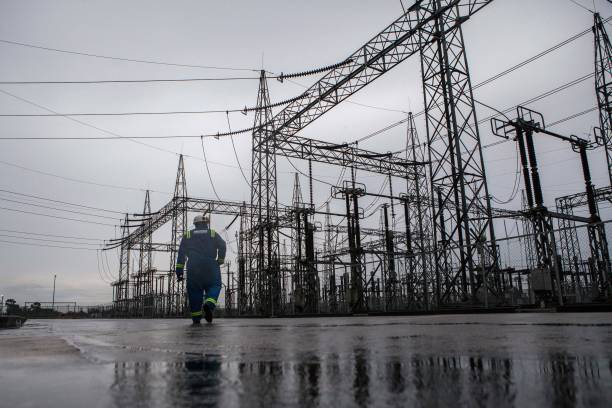After years of delays and operational setbacks, the Niger Delta Power Holding Company (NDPHC) has confirmed that the long-awaited Alaoji Power Plant in Abia State will finally commence operations next month, in what stakeholders hope will give Nigeria’s fragile power sector a badly needed boost. The announcement was made by the Managing Director of NDPHC, Chiedu Ugbo, who disclosed that all critical tests and arrangements have been completed to ensure that the plant will add nearly 500 megawatts to the national grid when it goes live in August.

Located near Aba, the Alaoji plant is one of the key facilities built under the National Integrated Power Project (NIPP) scheme designed to address Nigeria’s chronic electricity shortage. With an installed capacity of about 1,074 megawatts and a phase one target of around 480 megawatts, Alaoji has long been considered a crucial asset that could help stabilise power supply in the South-East and across the national grid. However, since its commissioning in 2015, the plant has struggled to operate at full capacity due to a combination of technical challenges, funding constraints and, most critically, inadequate gas supply.
Speaking during a recent inspection visit, Ugbo explained that NDPHC has resolved most of the gas supply bottlenecks that have plagued the plant for years. He noted that the company now has reliable arrangements with gas producers and suppliers in the region to ensure that the turbines receive enough gas to run continuously. According to him, new gas pipelines and metering systems have also been installed to reduce the risk of supply disruptions that previously forced the plant to shut down for extended periods.
“The Alaoji Power Plant is very important to the national grid and our strategy to deliver more power to Nigerians,” Ugbo said. “We have worked tirelessly with all stakeholders, including gas producers, transmission companies and the system operator, to clear every obstacle that has delayed the full take-off of this project. We are happy to report that by next month, Nigerians will start to feel the impact.”
He further noted that Alaoji’s revival aligns with the broader efforts of the NDPHC to optimise its power assets. Apart from Alaoji, the company manages several other plants under the NIPP programme, including Geregu, Omotosho, Olorunsogo, and Ihovbor. Together, these facilities have an installed capacity of over 4,000 megawatts, but frequent grid challenges, unpaid debts from distribution companies, and gas supply issues have historically limited their output.
For many industry observers, getting Alaoji up and running could mark a turning point, especially as the country battles with low generation levels. Data from the Nigerian Electricity System Operator (NESO) shows that Nigeria’s power generation has hovered between 3,500 and 4,500 megawatts for years—far below the estimated demand of over 20,000 megawatts. The shortfall has forced millions of households and businesses to rely heavily on diesel and petrol generators, pushing up production costs and adding to the hardship faced by consumers.
Industry stakeholders say that the Alaoji plant has the advantage of being located near key industrial clusters in Aba and surrounding cities, which means the generated power can be easily wheeled to areas of high demand with minimal transmission losses. The plant is also connected to major transmission lines that can feed power directly into the national grid.
However, experts warn that the plant’s success will depend not only on gas supply but also on the readiness of the transmission and distribution networks to handle the additional load. Nigeria’s power sector is notorious for weak transmission infrastructure, which often results in significant power losses. To address this, Ugbo said the company has been working closely with the Transmission Company of Nigeria (TCN) to ensure that evacuation facilities are ready.
“Generation without effective transmission and distribution means nothing to end-users,” he said. “That is why we have prioritised collaboration with TCN and the distribution companies to make sure the power we generate reaches the people.”
In the same vein, the Managing Director of TCN, Sule Abdulaziz, assured that transmission lines and substations linked to Alaoji have been strengthened to handle the extra load. He urged Nigerians to be patient and support the reforms taking place in the power sector, adding that stable electricity supply remains a collective responsibility.
The news of Alaoji’s imminent operation has been met with cautious optimism by residents and businesses in the South-East. Many see it as an opportunity to reduce reliance on expensive generators that drain household incomes and affect productivity. For manufacturers in Aba, a more reliable power supply could boost production, create jobs, and attract new investments to the region.
Nonetheless, power sector analysts stress that a sustainable solution requires more than reviving one plant. They argue that Nigeria must tackle broader systemic issues such as liquidity shortfalls, regulatory bottlenecks, and the need for private sector participation. They also call for an urgent resolution of debts owed by distribution companies, which often delay payments to generation companies and discourage further investments.
For now, the NDPHC says it is determined to prove that government-owned assets like Alaoji can deliver when properly managed and supported with the right policies. If all goes according to plan, the next few weeks could mark the beginning of a new chapter for Alaoji, and by extension, for Nigeria’s struggling power sector. Whether it will be enough to make a noticeable dent in the country’s decades-old power crisis remains to be seen, but many Nigerians are hopeful that this time, the lights will finally stay on.
Support InfoStride News' Credible Journalism: Only credible journalism can guarantee a fair, accountable and transparent society, including democracy and government. It involves a lot of efforts and money. We need your support. Click here to Donate
